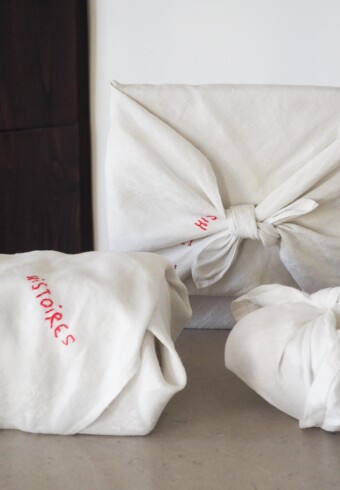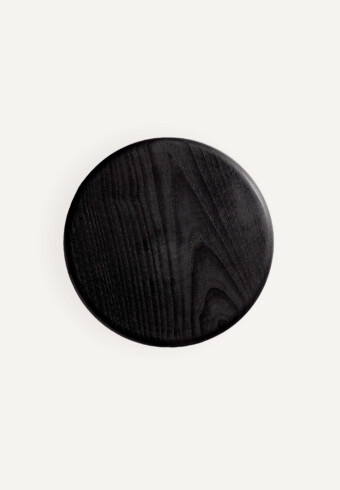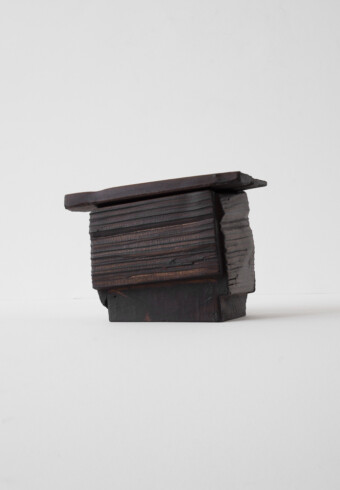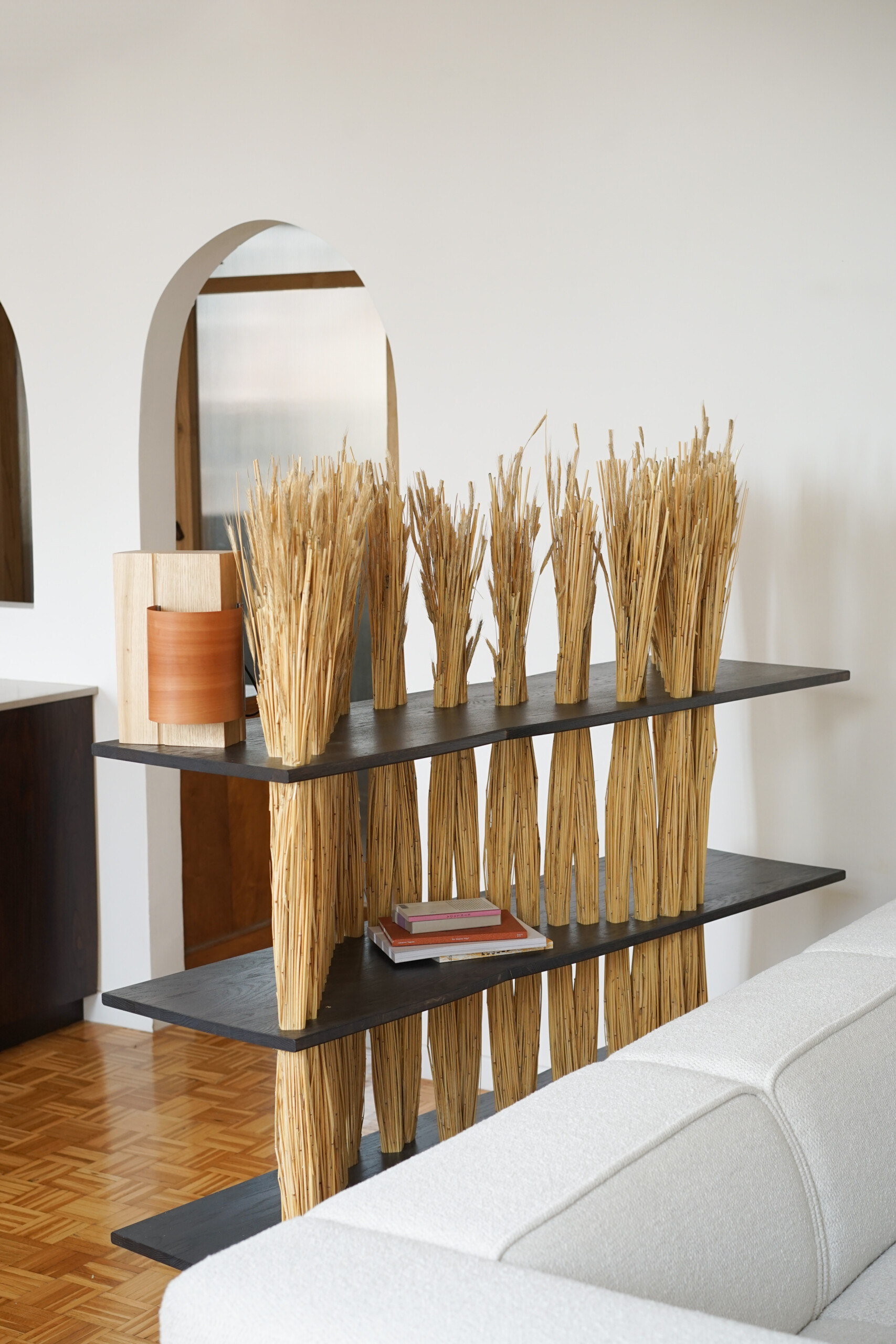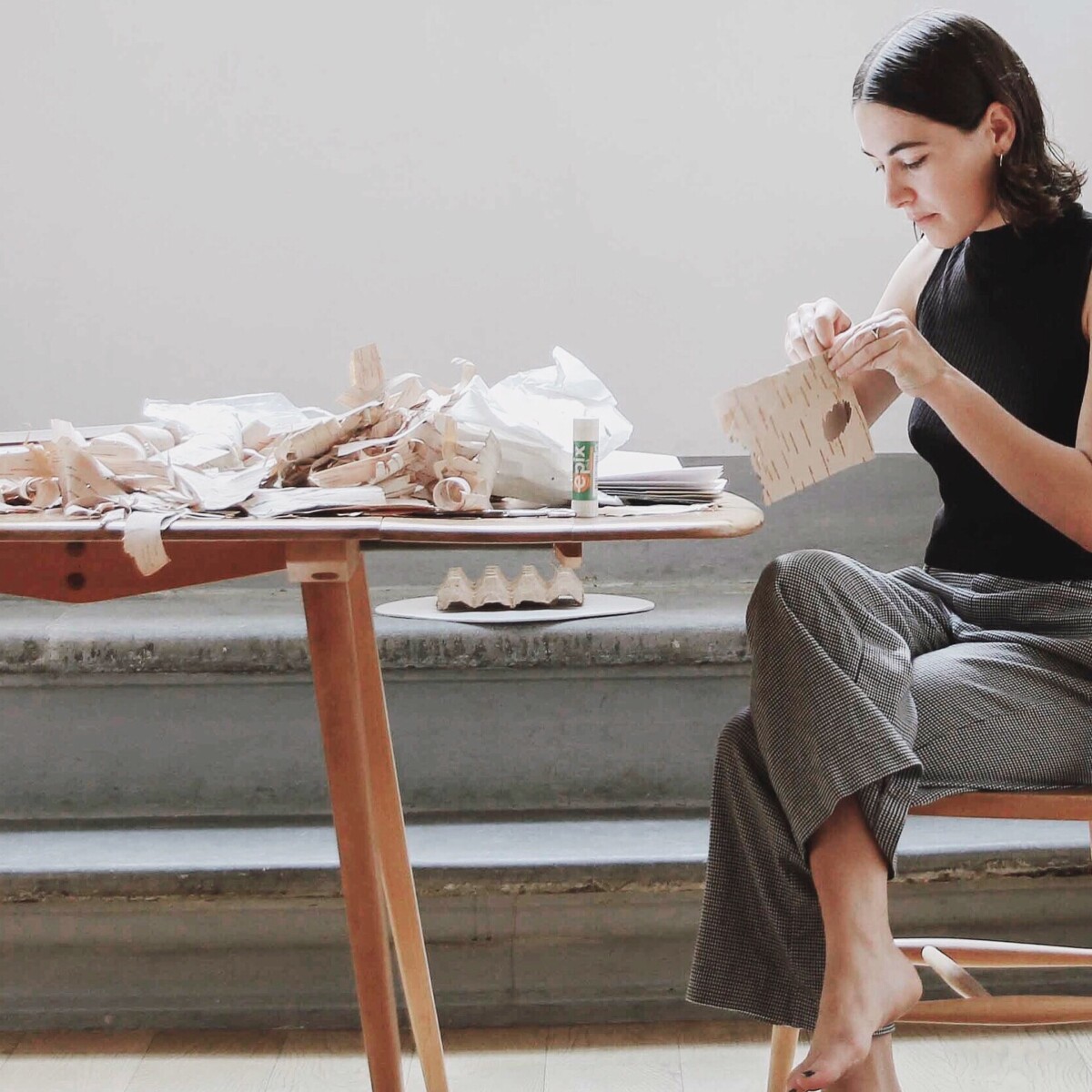
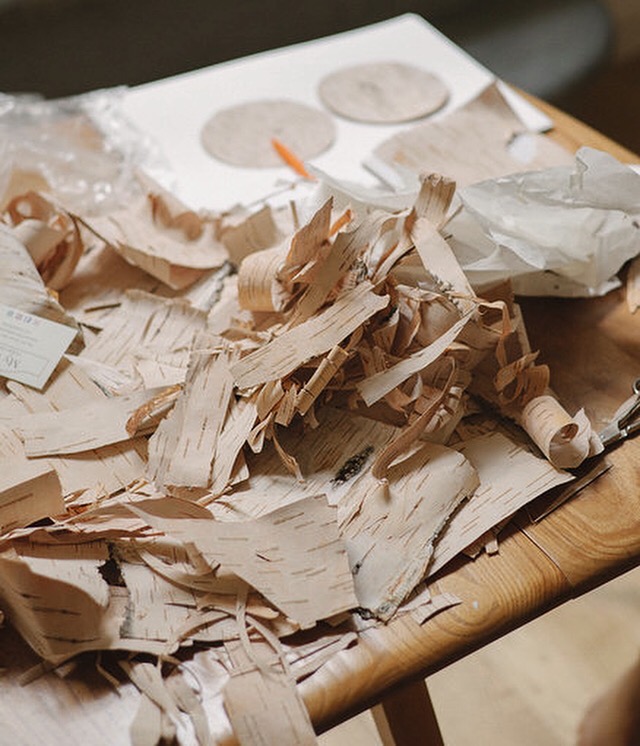
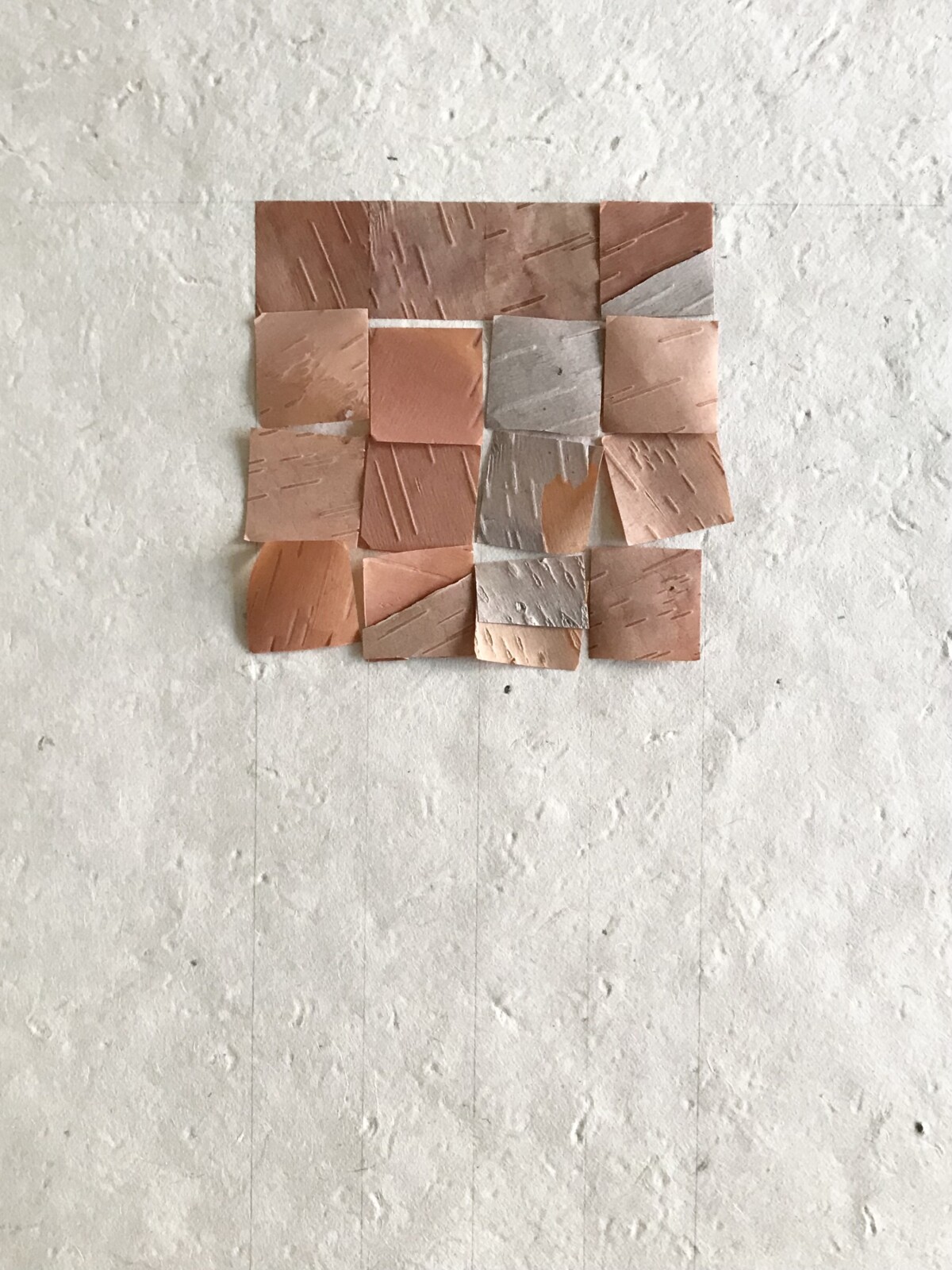

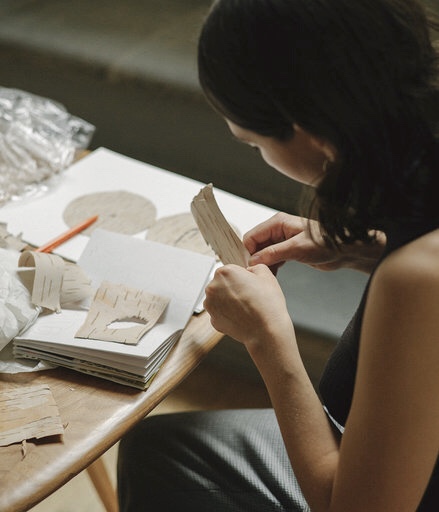


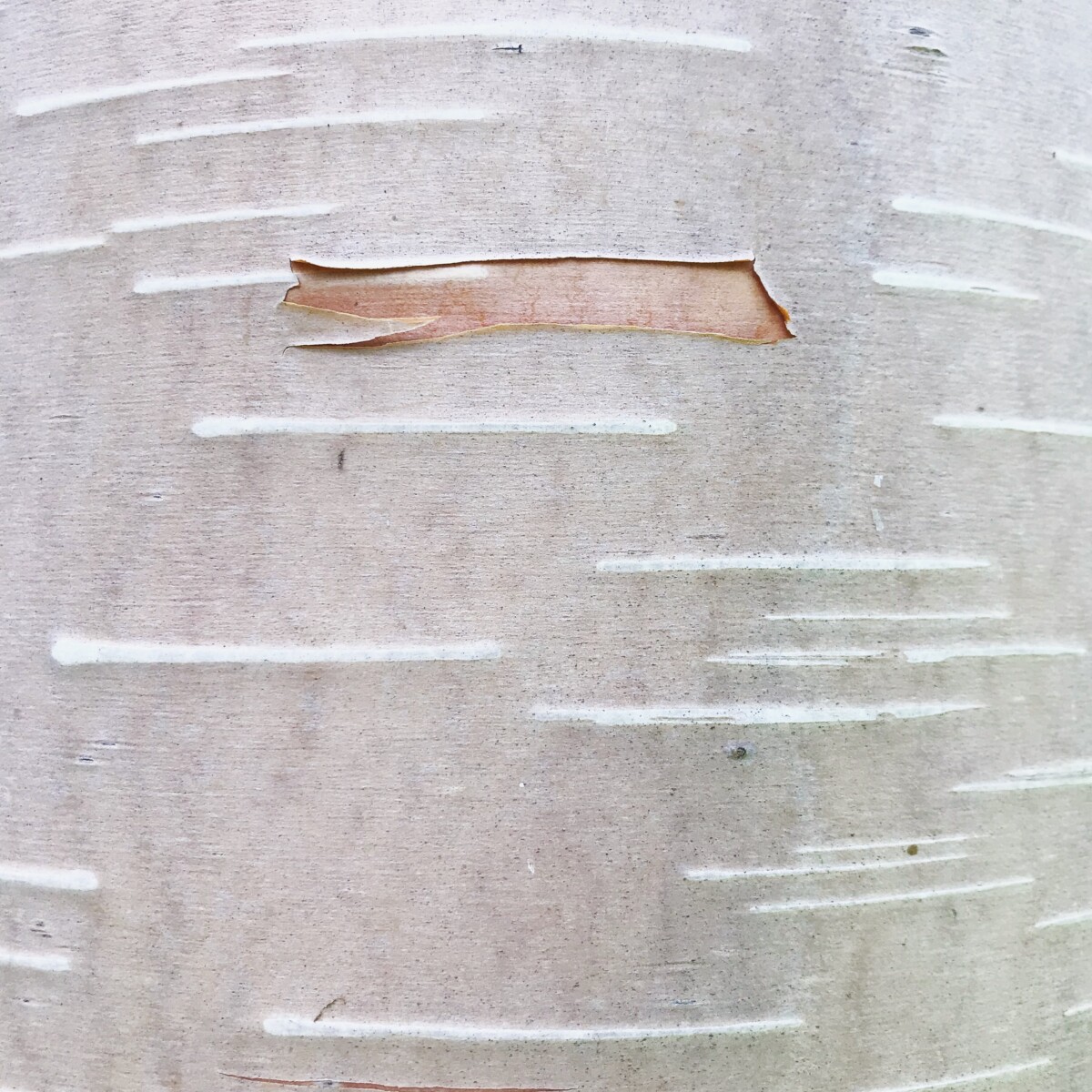
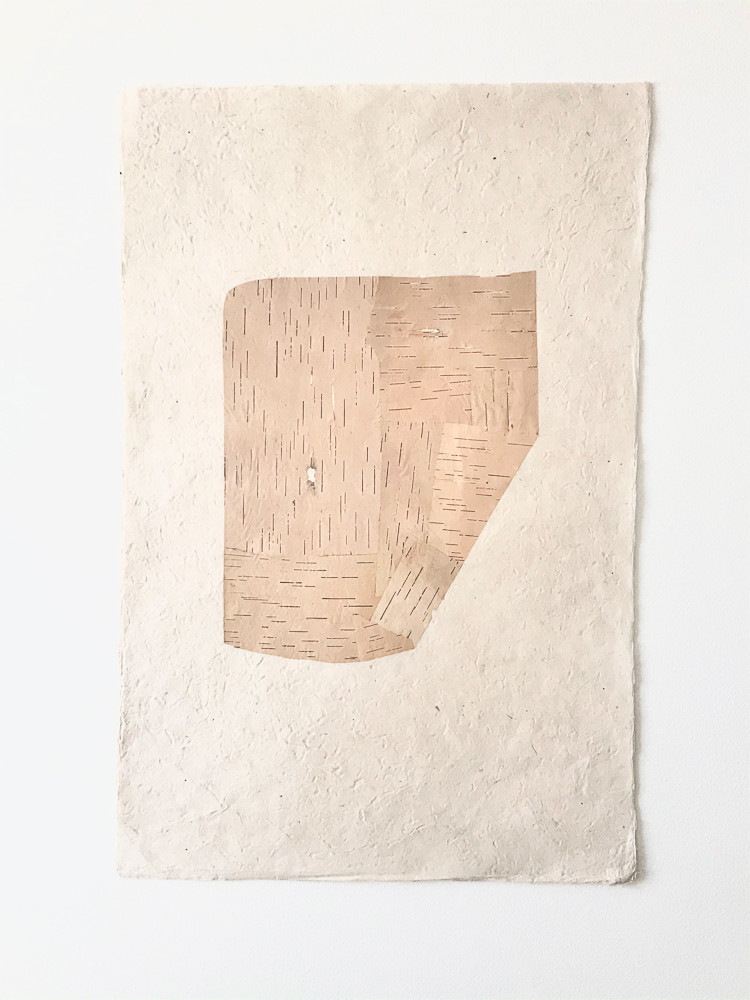
Sarita Arte

Through a graphic language and a natural medium, Sarita reveals sensitive works. Working more particularly with the bark of Betula Papyrifera – paper birch -, the artist mixes shades and textures. We immerse ourselves for the duration of a meeting in his universe.
Hello Sarita, can you present your background?
Born in Montreal to European parents, I am a Franco-Swedish artist in love with nature. My practice stemming from Scandinavian design explores the many facets of birch, my raw material, coming from the Canadian and Swedish forest. After studying theoretical and applied art at Stockholm University, the Sorbonne in Paris and UNAM in Mexico City, I developed an approach centered on the aesthetic manifestations of nature by moving in 2018 in Sörmland, a forest region of Sweden. Birch bark, in all its facets, has gradually become the starting point for each of my creations.
Your artistic approach is intimately linked to nature, where does this attraction come from?
Having grown up in the cosmopolitan city of Montreal, it was only by moving in 2018 to the shores of Lake Långhalsen in Sörmland in Sweden, when I was surrounded by large wooded areas, that I encountered this other dimension of myself. The one that needs vertical trees and water on the horizon, this vital element in which I bathe and recharge my batteries every morning. Treading the dirt in the woods makes me feel alive. It was in the enveloping environment of the forest, where the dance of fog replaces the movement of traffic, that I began to take an interest in birch, first as a simple support (a kind of natural canvas) then as sculptural potential, then today as a color palette, thanks to the unsuspected discovery of the chromatic properties of the surface layer of the tree. Often seen as a by-product in the wood industry, birch bark has become the element at the very heart of my artistic practice.
Can you explain to us the different characteristics of Betula Papyrifera?
Betula papyrifera is a species of birch found only in North America and whose bark is characteristic. It is not insignificant that its name in Latin translates to paper birch. The suppleness and lightness of the layers are identical to paper, sometimes even to tissue paper, as the finesse brings transparency to the structure. It is in these layers of bark that one can discover a whole spectrum of colors that one would not suspect at first glance. The rather homogeneous color of the end of this famous natural envelope tends more often towards a light gray than a saffron or a flamboyant carmine (present in the internal layers).
What place does sourcing have in your creative process?
Forest harvesting is definitely one of my favorite parts of the creative process. Unlike many other birch species where you have to wait for a specific time of year (often spring when the sap is circulating in the tree) to avoid injury by making an incision to detach layers of bark from the trunk, no intervention is necessary on trees belonging to the betula papyrifera species to collect the bark. It is as if the tree changed skin, shedding like a snake several times a year, summer and winter. Walking through the moss and the trees in search of birches ready to strip of their coats is always a moment of meditation in the middle of nature. This unique contact continues when it's time to take care of the harvest. From careful brushing to remove natural impurities, such as dirt, dry leaf dust or cobwebs, to choosing color shades, sketching and creating compositions, at all stages of the process I feel the proximity of nature, which never ceases to inhabit me and which I never cease to admire.
Do you consider yourself an artist or do you have the soul of an artisan?
In Scandinavia, there is a rich heritage of bark-related craftsmanship in the production of useful objects. Braiding the bark (most often from betula pubescens) is the technique most often used to make baskets, carving knife cases or even shoes. A recent resurgence of interest in these ancestral practices and this material has taken off and shows a desire to move closer to a slower and more sustainable mode of production. As for me, I consider myself more of an artist because the techniques I use come from exploration rather than tradition. However, each artist is also a craftsman of his art!
Are you trying to convey a message through your works?
Rather than trying to transmit a message, I seek to communicate, through the enhancement of hidden details of nature, my fascination for this organic sphere which resonates so much in humans by its beauty when one does not try to tame it or modulate it into a resource to be exploited.
What are your plans for the future? Do you have the will to continue to explore this material?
Yes, definitely yes! The specialization in birch bark as a medium has so far never limited me in my practice and on the contrary always opened new doors and avenues of exploration. Weaving with bark is my next big project. I'm already looking at the different options for designing a bark-only yarn that's soft and malleable enough to fit a master loom. It is also in my future plans to travel to Nepal to be part of the process of making lokta paper (made from the fiber of shrubs that proliferate in the Himalayan forests of Nepal), which has become my main medium for collage work. Joining a community that practices an ancestral craft to acquire new expertise is an interesting follow-up to this great interest in this tradition of producing paper entirely made from bark fibres.
Three of his works can be found on our Online Store !








- Photographer: Sarita Arte and Photos 1,2 & 5 Daniel Civetta
- Location: Sweden
- Website: https://www.instagram.com/sarita.arte/
Share
